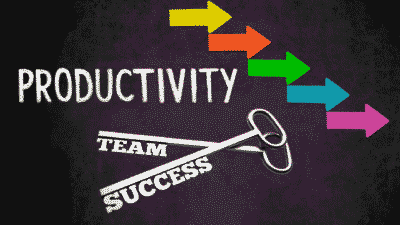A staggering 86% of employees and executives cite a lack of effective collaboration and communication as the main cause for workplace failures. This isn’t a simple matter of misunderstanding; it’s a fundamental breakdown in how individuals interact. Mastering workplace communication styles is not just a soft skill—it is the critical foundation upon which successful projects, cohesive teams, and strong organizational performance are built. For you, as a leader, understanding and navigating these styles is your primary tool for turning potential friction into productive momentum. This guide moves beyond theory to provide a practical, actionable framework for identifying, adapting, and mastering these styles to foster a more efficient and respectful work environment.
1. Understanding the Four Core Workplace Communication Styles
Before you can manage communication, you must first recognize its distinct forms. Every interaction in your workplace falls into one of four categories. Recognizing them is the first step toward strategic influence.
1.1 The Passive Communicator
The passive individual avoids expressing their opinions or needs. They prioritize avoiding conflict over contributing effectively, often leading to unresolved issues and suppressed innovation.
- How to Identify Them: They often use phrases like “Whatever you think is best” or “It doesn’t really matter to me.” Their posture may be slumped, and they tend to avoid a direct gaze.
- Impact on the Team: While they may seem agreeable, their reluctance to provide input can stall projects and lead to groupthink. Important concerns may go unvoiced until they become significant problems.
1.2 The Aggressive Communicator
This style is about winning, often at the expense of others. Aggressive communicators express their needs and opinions forcefully, with little regard for the thoughts or feelings of their colleagues.
- How to Identify Them: They use blaming language (“It’s your fault”), interrupt frequently, and may use an intimidating tone. Their body language is often overbearing and dismissive.
- Impact on the Team: This style erodes trust and creates a climate of fear. Team members become hesitant to share ideas, leading to decreased morale and collaboration.
1.3 The Passive-Aggressive Communicator
A blend of the previous two, this style appears passive on the surface but expresses anger and frustration indirectly. It is one of the most destructive workplace communication styles because it is subtle and undermines team cohesion.
- How to Identify Them: They may use sarcasm, mutter to themselves rather than address an issue directly, or agree to a task but fail to complete it properly. Their actions are inconsistent with their words.
- Impact on the Team: It creates a confusing and unpredictable environment. Team members are never sure of the individual’s true intentions, which poisons professional relationships and complicates workflow.
1.4 The Assertive Communicator
This is the ideal communication style for a professional environment. The assertive communicator clearly and respectfully states their needs, opinions, and boundaries. They value both their contributions and the contributions of others.
- How to Identify Them: They use “I” statements to express themselves (e.g., “I think we should consider this approach because…”). They listen actively, maintain a confident posture, and engage in solution-oriented dialogue.
- Impact on the Team: Assertiveness fosters an environment of mutual respect, clarity, and trust. Problems are solved more efficiently, and collaboration becomes more effective.
[Visual Suggestion: A simple table comparing the four styles across key characteristics: Goal, Tone of Voice, Common Phrases, and Outcome.]
| Style | Primary Goal | Common Phrases | Typical Outcome |
| Passive | To avoid conflict | “It’s fine.” | Unmet needs, resentment |
| Aggressive | To win | “You must…” | Conflict, mistrust |
| Passive-Aggressive | Indirectly express anger | “Sure, I’ll do it…” (sarcastic) | Confusion, damaged morale |
| Assertive | To find a mutual solution | “I believe…” / “What if we…” | Clarity, respect, solutions |
2. How Do You Identify Your Primary Workplace Communication Styles?
Self-awareness is the cornerstone of improvement. You cannot adapt your approach until you understand your own default tendencies, especially under pressure. To identify your dominant style, consider your typical responses in the following scenarios. There is no judgment here; the goal is honest assessment for professional growth.
- When a project you are leading is behind schedule, do you:
- A. Avoid mentioning the delay, hoping to catch up without anyone noticing? (Passive)
- B. Call a meeting and immediately ask who is responsible for the bottleneck? (Aggressive)
- C. Make sarcastic comments about the team’s pace in emails? (Passive-Aggressive)
- D. Convene the team to transparently discuss the challenges and collaboratively create a new action plan? (Assertive)
- When a colleague proposes an idea you disagree with, do you:
- A. Remain silent, even though you foresee problems with the plan? (Passive)
- B. Immediately point out all the flaws in their idea without offering an alternative? (Aggressive)
- C. Agree in the meeting but later complain to another colleague about the idea’s weakness? (Passive-Aggressive)
- D. Acknowledge the colleague’s contribution and then present your concerns with supporting reasons, suggesting a different perspective? (Assertive)
By reflecting on your past behavior in similar situations, you can identify which of the workplace communication styles you gravitate towards. This self-knowledge is the first, most crucial step toward intentional communication.
3. A Practical Framework for Adapting Your Communication
Your role as a manager is not just to practice assertive communication but also to skillfully interact with every other style. Your adaptability is key to unlocking your team’s full potential.
3.1 How to Effectively Engage a Passive Colleague
Your goal is to create a safe environment where they feel comfortable contributing.
- Ask open-ended questions: Instead of “Do you agree?” ask, “What are your thoughts on this approach?” This requires more than a “yes” or “no” answer.
- Provide time to think: Directly ask for their input but give them a deadline. For instance, “Mr. Ivanov, I would value your perspective on the supplier report. Could you please send me your thoughts by the end of the day?”
- Acknowledge their contribution: When they do share an opinion, explicitly thank them for it. This positive reinforcement encourages future participation.
3.2 How to Professionally Manage an Aggressive Individual
The key here is to remain calm and redirect the conversation toward facts and solutions, not emotions.
- Do not engage in an argument: Maintain a neutral tone and professional demeanor. Your calmness can de-escalate the situation.
- Use factual language: Shift the focus from personal opinions to objective data. Say, “The report shows a 15% decrease in output. Let’s focus on understanding the cause.”
- Set clear boundaries: If the behavior becomes disrespectful, address it directly and privately. “Ms. Garcia, it is important that we maintain a respectful tone in our discussions.”
3.3 How to Address Passive-Aggressive Behavior
This requires bringing the hidden issue to the surface in a calm, non-confrontational manner.
- Address the behavior, not the person: Focus on the observable actions. For example, “I noticed that you agreed to complete the analysis, but it was not submitted on time. Let’s talk about what happened.”
- Be direct and specific: Vague accusations will only increase defensiveness. State the facts clearly and ask for clarification on their intentions.
- Reinforce the value of direct communication: Encourage the individual to bring concerns to you directly in the future, assuring them that their perspective will be heard without negative consequences.
4. Advanced Application: Mastering Written Communication and Feedback
In a modern workplace, not all communication is face-to-face. Your mastery of workplace communication styles must extend to emails, reports, and, most importantly, performance feedback.
4.1 Refining Your Written Communication
The absence of non-verbal cues in writing means clarity and tone are paramount.
- Assertive Emailing: Be direct and clear about your request or message in the first one or two sentences. Use bullet points or numbered lists to make complex information easy to digest.
- Avoid Passive-Aggressive Pitfalls: Phrases like “As per my last email” can come across as condescending. Instead, be direct: “Just following up on my email from Tuesday. I need your feedback on the proposal to move forward.”
- Proofread for Tone: Before hitting send, read your message aloud. Does it sound collaborative and respectful, or demanding and aggressive? A simple change from “You need to fix this” to “Could we revise this section for clarity?” makes a significant difference.
4.2 The Art of Delivering Assertive, Constructive Feedback
Giving feedback is one of a manager’s most critical tasks. Using an assertive framework ensures the message is received and acted upon, rather than causing resentment.
A highly effective method is the Situation-Behavior-Impact (SBI) model. It is factual, objective, and solution-focused.
- Situation: Define the specific context. “During this morning’s client presentation…”
- Behavior: Describe the exact, observable behavior. “…you answered the client’s technical questions with detailed data.”
- Impact: Explain the consequence of the behavior. “…This built the client’s confidence in our expertise and helped secure their approval for the next phase.”
This model works equally well for corrective feedback: “In our team meeting (Situation), when you interrupted a colleague mid-sentence (Behavior), it broke their train of thought and we lost a potentially valuable idea (Impact).”
Conclusion
Mastering workplace communication styles is not an abstract corporate ideal; it is a concrete, learnable skill with a direct impact on your team’s productivity and your organization’s success. It begins with self-assessment, moves to a strategic adaptation to others, and is refined through mindful practice in every email, meeting, and feedback session. By moving away from reactive communication habits and embracing a consistently assertive approach, you build a foundation of trust and respect. You empower your team to solve problems, innovate, and perform at their highest level, transforming the challenge of miscommunication into an opportunity for exceptional leadership.
Frequently Asked Questions (FAQ)
1. What are the four main workplace communication styles?
The four primary styles are Passive (avoiding conflict), Aggressive (dominating others), Passive-Aggressive (expressing discontent indirectly), and Assertive (expressing oneself clearly and respectfully).
2. Why is the assertive communication style considered the most effective in a professional setting?
Assertive communication is most effective because it is built on mutual respect. It allows for the clear expression of ideas and needs without devaluing others, leading to better problem-solving, stronger teams, and more positive outcomes.
3. How can I start improving my communication style today?
Begin by actively listening in your next conversation without planning your response. Second, practice using “I” statements to express your thoughts (e.g., “I feel we should…”). Finally, before speaking, take a moment to consider if your response is solution-focused.
4. Is it normal to use different communication styles at different times?
Yes, most people have a dominant style but may shift depending on the situation or stress level. The goal is not to eliminate other styles entirely but to develop self-awareness and consciously choose an assertive approach as your default professional standard.
5. How does understanding communication styles help in remote work environments?
In remote work, where non-verbal cues are absent, understanding these styles is even more critical. It helps you interpret written messages more accurately and be more intentional about clarity and tone in your own emails and chats to prevent misunderstandings.
references
Warning: The provided links lead only to the specified content. Other areas of those sites may contain material that conflicts with some beliefs or ethics. Please view only the intended page. Note: The source links are available in English only.
- Pumble February 11, 2025 Author: Marija Kojic Workplace Communication Statistics in 2025.
Global stats showing that 86% cite lack of communication as main cause of workplace failures. :contentReference[oaicite:0]{index=0} - Center for Creative Leadership June 2025 Author: Kylee Stone Mastering the SBI Feedback Model: Definition and Examples.
Explanation of the Situation-Behavior-Impact feedback model. :contentReference[oaicite:1]{index=1} - Forbes Coaches Council via Forbes August 8, 2024 Author: (Forbes Coaches Council) Collaborative Communication: Building Stronger Teams.
Discusses how communication/collaboration failures hurt workplace performance. :contentReference[oaicite:2]{index=2} - Harvard DCE February 4, 2022 Author: Emerson Is Your Workplace Communication Style As Effective As It Could Be?.
Overview of the four communication styles and how they apply to leadership. :contentReference[oaicite:3]{index=3} - PMC / National Institutes of Health 2025 Authors: ME Meneses-La-Riva et al. The Relationship Between Effective Communication and ….
Academic study linking communication & teamwork training to better collaboration. :contentReference[oaicite:4]{index=4} - Careerminds September 30, 2024 Author: Cynthia Orduña How to Effectively Use the SBI Model for Feedback.
Guide with tips & examples for using SBI feedback method. :contentReference[oaicite:5]{index=5}







